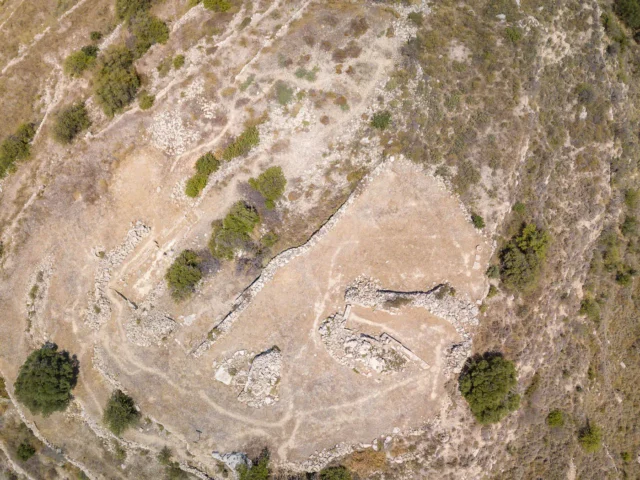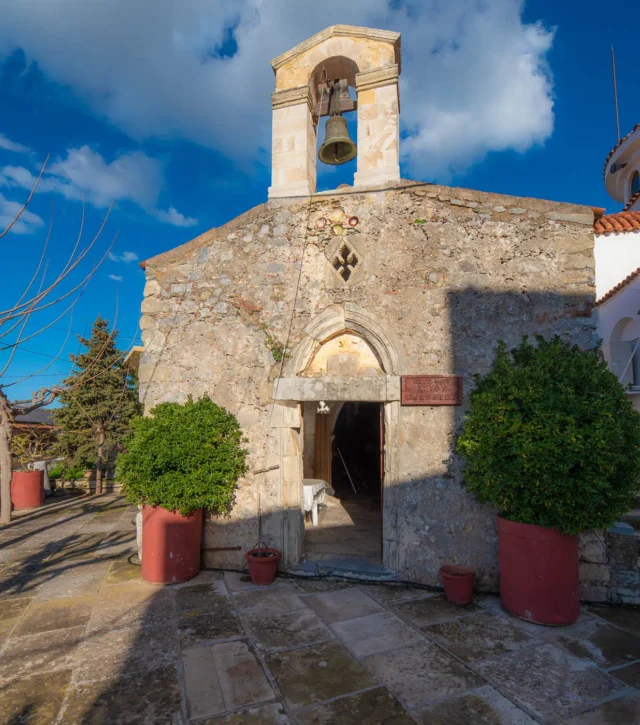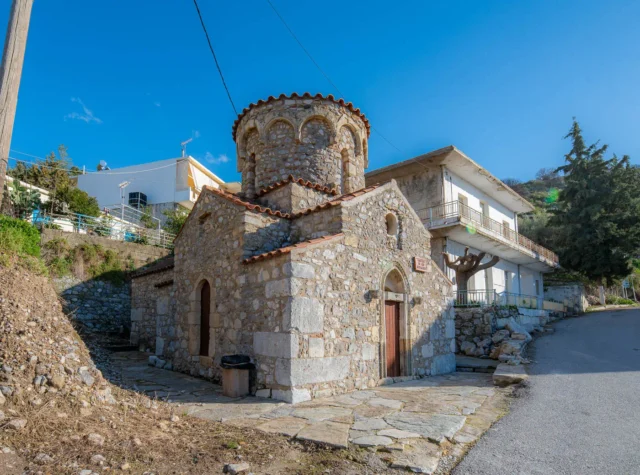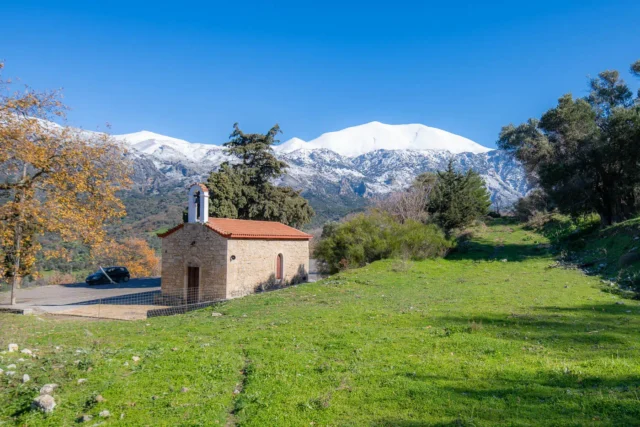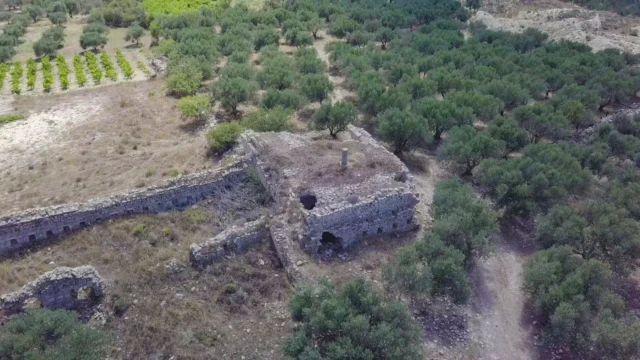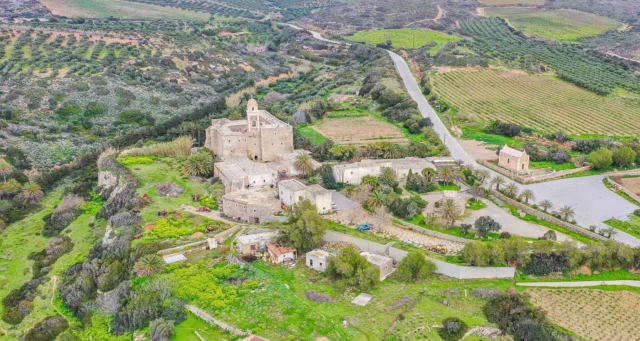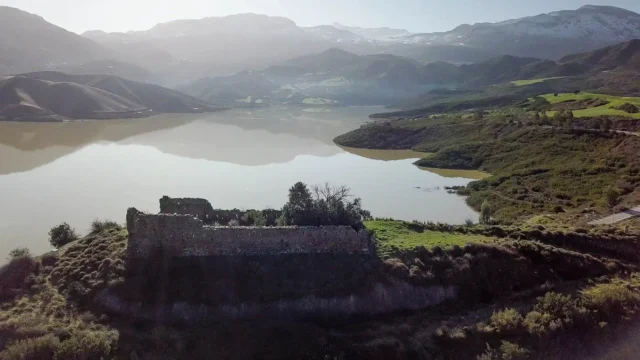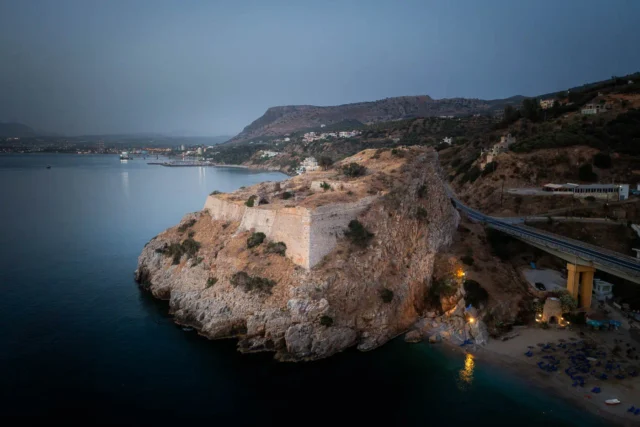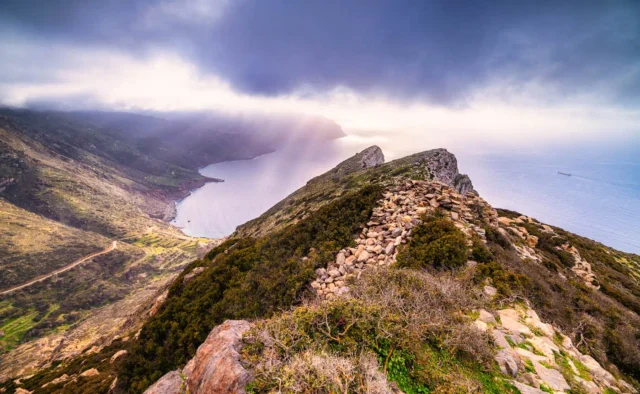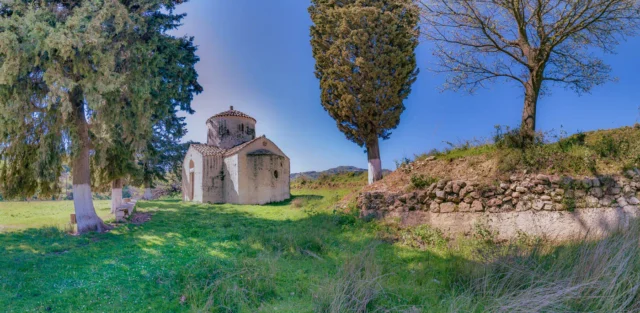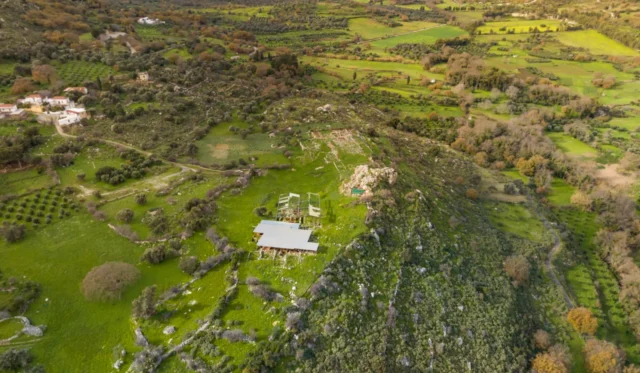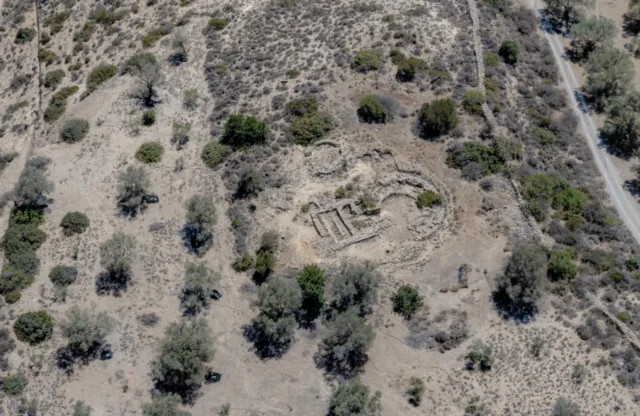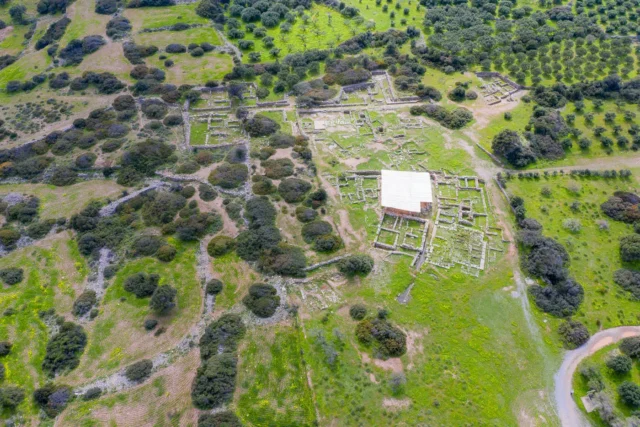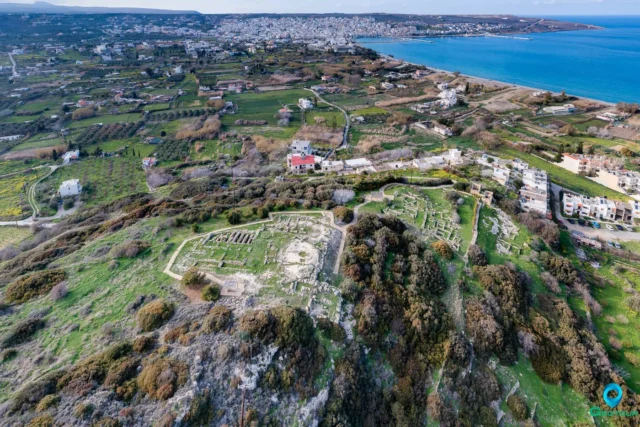748
listings found
Categories
Active filters:
Presos (Praisos) ancient settlement
Located in eastern Crete's Siteia peninsula, this significant archaeological site occupies two hills near the Siteia river. It was a major settlement from the Late Minoan through Hellenistic periods, notably associated with the Eteocretans, considered the original Cretans. Evidence dates back to the Neolithic. Key periods include Late Minoan (tombs, refuge settlements), Archaic (city-state formation, Eteocretan inscriptions), Classical (flourishing inland city-state controlling territory), and Hellenistic (destruction by Hierapytna around 140 BCE). The site saw reoccupation in the Middle Byzantine and Venetian periods. Archaeological finds include Eteocretan inscriptions, LM III tombs, Archaic sanctuaries (Altar Hill), architectural remains (houses, possible Andreion), pottery, and pithoi. The distinct Eteocretan language and identity are crucial aspects. The city lacked walls but had a nearby fort. Agriculture and textile production were likely economic activities.
Panokastri, the Koules of Mylopotamos
Explore the ruins of the Koules of Mylopotamos, a 14th-century Venetian fortress in Crete, and discover the history of the Kallergis family's rebellion.
Toplou monastery
Toplou Monastery, on Crete's eastern tip, is a fortified monastery showcasing Byzantine and Venetian architecture. Dating back to the 14th century with 17th-century fortifications, it played a key role in Cretan resistance during Ottoman rule. The monastery features a two-aisled basilica dedicated to the Virgin Mary, housing a remarkable collection of Byzantine icons and frescoes, and a museum with religious artifacts and folk art. Beyond its religious and historical significance, Toplou Monastery is known for its agricultural heritage, producing high-quality organic wine and olive oil. It stands as a cultural landmark, attracting visitors with its history, architecture, and scenic location, while remaining an active monastery and cultural center.
Koules of Potamoi Dam
Located on a hill west of the Potamoi Dam reservoir in the Amari Valley, Rethymno, this is one of many small Ottoman forts built between 1866 and 1869. This koules was part of a fortification network designed to control the Cretan hinterland, specifically the crucial passage leading to the Messara Plain. The area was known for the Ambadiotes, requiring Ottoman military presence. The rectangular fort (25m x 8m) is a designated preserved monument, with partially preserved exterior walls overlooking the reservoir.
Agios Nikolaos, and Transfiguration of Christ churches in Elenes
In the Amari Valley of Crete, the village of Elenes features the Church of Agios Nikolaos, a dual-aisled Byzantine structure dedicated to St. Nicholas and St. Anne. The church is significant for its extensive cycle of 13th-century frescoes, which portray scenes from the life of Christ and other saints in a style marked by expressive figures and rich colors. Nearby are the ruins of another Byzantine church, dedicated to the Transfiguration of Christ, which also retains fragments of its frescoes.
Palaiokastro Fortress: Guardian of Heraklion Bay
The Palaiokastro Fortress, built by Venetians (1573-1595) on a cliff overlooking Palaiokastro Beach near Heraklion, Crete, defended Heraklion Bay. Its three levels housed powder magazines, a cistern, barracks, and a chapel. The winged lion of St. Mark on its walls signifies Venetian heritage. Captured by Ottomans in the Cretan War (1645-1669), the fortress was documented in the 1900s by G. Gerola. Now partly ruined, it's undergoing restoration.
Liopetro Fortress: A Venetian Stronghold Overlooking the Cretan Sea
A Venetian fortification, also known as Leon di Pietra, located on a cliff near Chamezi village in Sitia, Crete. Proposed in 1579 by Proveditor Giacomo Foscarini, it was built in the early 17th century as a refuge for 6,000 Sitia residents against potential Turkish attacks. It never served this purpose, as the population was relocated to Heraklion. The partially ruined structure includes vaulted cisterns, a church of Saint John, and the chapel of Prophet Elias at its summit.
Koules in Meronas
The Koules of Meronas, also known as the Koules of Apostoli, is a significant 19th-century Ottoman fortification in Crete. Constructed between 1866-1869 at the strategic entrance of the Amari Valley and the exit of the Potamon Valley, its purpose was to monitor and suppress Cretan rebels. The structure was a large, central Koules (Kisla), composed of two buildings with bastions, serving as a military headquarters during the Cretan Revolution of 1866-1869. Though partially ruined, substantial portions of its walls remain.
Agia Paraskevi in Kalogerou
Agia Paraskevi, near Kalogerou in Amari, Crete, is a 16th-century Venetian-era church with a free cross floor plan and a dome on a cylindrical drum. Reconstructed in 1888, it retains original Venetian frescoes, notably in an arcosolium depicting Christ and kneeling figures, including a Georgios Chortatzis. The church's architecture and frescoes, along with the Chortatzis burial, highlight Venetian influence in Crete. The identity of Georgios Chortatzis, possibly linked to archons or a playwright, remains debated. The church is active and open to visitors.
Monastiraki Minoan Palace
Situated in Crete's Amari Valley, a strategic corridor, this site was a significant Minoan Protopalatial administrative center (c. 2100-1700 BC). Covering over 300,000 square meters, it includes large-scale buildings, vast storage areas, workshops, and multiple sealings archives that reveal its economic power. Artifacts, including sealings, show a deep integration into the broader Minoan trade network, with notable connections to the palace at Phaistos.
Minoan Archaeological Site at Odigitria Monastery
The Odigitria Cemetery in Crete's Asterousia mountains is an archaeological site dating back to the Early Minoan (EM) period.
It features two tholos tombs (A and B), a Rectangular Building, courtyards, an ossuary, and a possible altar, all enclosed within a peribolos wall. The site's three construction phases span from the Final Neolithic to the Middle Minoan (MM) era. Tholos A, the smaller of the two tombs, contained undisturbed EM I pottery, while Tholos B boasts a unique complete outer wall. The Rectangular Building may have served as an independent burial building or ritual space. The courtyards, particularly the Eastern and Outer Courtyards, likely hosted rituals associated with the deceased. The ossuary reveals the practice of secondary burial, where bodies were initially interred in the tholos tombs or pithoi and later transferred to the ossuary. The Odigitria Cemetery provides significant insights into Early and Middle Minoan burial practices, social structures, and material culture.
Apesokari Tholos tombs
The Apesokari Tholos Tombs in Crete are significant Early Minoan burial sites. Tholos Tomb A features a unique circular burial chamber and annex, used for both primary and secondary burials. Tholos Tomb B includes multiple rooms with evidence of communal drinking and larnax burials. Both tombs offer valuable insights into Early Minoan funerary practices and social organization.
Palaikastro Minoan Settlement (Roussolakkos)
The Minoan settlement of Palaikastro, located near the modern village of Palaikastro on Crete's eastern coast, thrived during the Bronze Age. Occupied from the Early Minoan II to the Late Minoan IIIB periods (c. 2600-1200 BC), the settlement spanned over 50,000 square meters. Palaikastro's strategic location with a sheltered harbor facilitated trade and agriculture. Excavations have revealed a well-planned town with houses, workshops, and evidence of a vibrant social and economic life. The town's layout suggests central planning, with grid-like streets and organized blocks of houses, possibly indicating a clan-based social structure. Palaikastro's economy was based on agriculture, trade, and crafts like weaving, metalworking, and pottery production. Religious practices are evident through artifacts like figurines and incense burners. Ongoing archaeological investigations continue to enrich our understanding of this important Minoan center.
Petras Minoan settlement
Located near Siteia in eastern Crete, this significant Minoan archaeological site shows continuous occupation from Final Neolithic (ca. 4000 BCE) to Byzantine eras. Excavations reveal a small palace, first built in MM IIA, destroyed around 1700 BCE (MM IIB), rebuilt in Neopalatial (MM III-LM IB), and destroyed again in LM IB. Features include a central court, magazines, ashlar masonry, and the best-preserved Minoan hieroglyphic archive. A few Linear A inscriptions were also found. The palace was the center of an urban settlement with houses, evidence of pottery, textile, and purple dye production, and Protopalatial/LM III fortifications. Limited Postpalatial (LM III) reoccupation occurred. The site offers key insights into Minoan regional administration and economy in eastern Crete.
Zakros Minoan Palace
The Minoan Palace of Zakros, situated in eastern Crete, features Neolithic habitation and a significant Late Minoan IB palace. Excavations reveal a Neopalatial settlement, Protopalatial houses, and evidence of post-palatial reoccupation. The palace, with 150 rooms and a central court, highlights Minoan architectural conventions. Discoveries include clay nodules, seal impressions, and elaborate artifacts like the "Bull’s Head Rhyton." The site’s history spans from the Final Neolithic to the Late Minoan IIIB periods, marked by both construction and destruction, potentially by natural disasters. Excavations by Hogarth and Platon uncovered residential and economic zones, a complex street network, and palatial annexes. The site, lacking modern visitor facilities, offers insights into Minoan civilization, with artifacts exhibited in Heraklion, Aghios Nikolaos, and Siteia museums.









